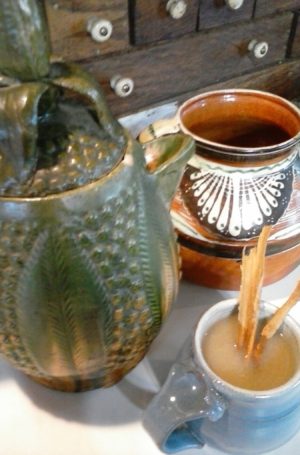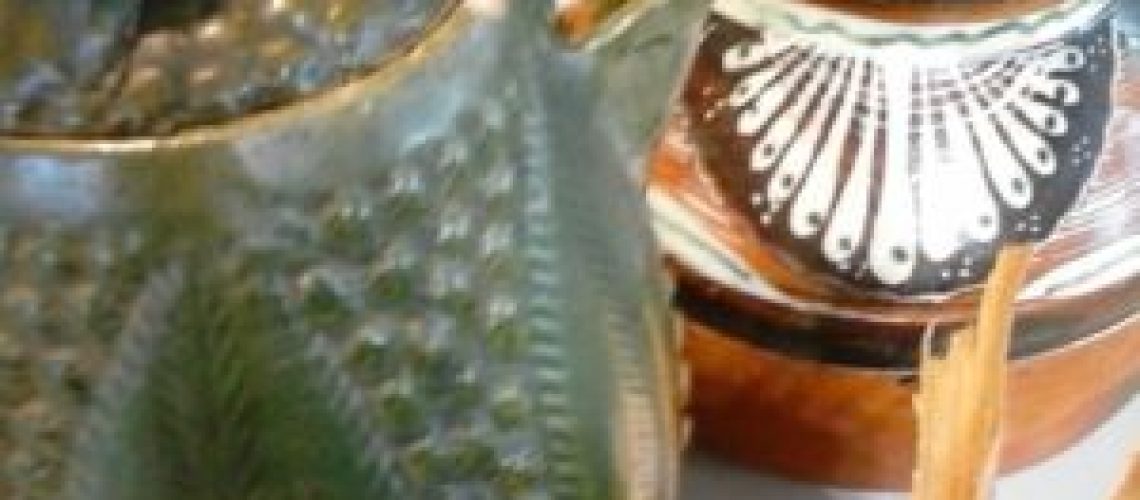There is a particular smell to corn that has been soaked in wood ash lye, then washed and hulled and ground into a fine meal.
It is the aroma of freshly made tortillas, of tamales as they steam, of my mother’s huipiles.
Really. No matter how freshly laundered, no matter how many cedar balls or lavender sachets have been thrown in the drawer to keep the moths away, the distinctive hand-woven Guatemalan blouses my mother wore retain the smell of a grain turned more aromatic, more flavorful, more nutritious by the nixtamalation process.
Smell nixtamalizes memory.
Or maybe it is the other way around.
In either case, whenever I open a bag of Maseca (the brand of nixtamalized masa harina I most frequently use) what wafts up is redolent with memories of my mother, of my years in Guatemala, of the indescribable goodness of a tortilla eaten fresh off the comal.
The aroma conjures newer memories from my years in the United States, as well.
I got married in my mother’s fanciest huipil from Quetzaltenango, and I don’t think I was just imagining my mother’s ghost in that courthouse in Pennsylvania’s Amish Country, as I stood beside the person with whom she had predicted, before her death, I would spend a lifetime.
I taught myself to make tortillas here, and tamales too (Guatemalan-style, wrapped in plantain leaf, as well as Mexican-style cornhusk-wrapped ones), and one year managed to rope my brothers (and every member of our families, no matter how young) into helping with the labor-intensive process of producing some hundred or so of the fragrant and savory cornmeal bundles.
Once, while I was interviewing a young, undocumented tamalera for a feature story I was writing for a Spanish-language newspaper and bilingual website, the aroma greeted me even before she started the tamal process I was there to document. She offered me atole — a thick and sweet hot drink made with masa — from a big pot simmering on the back burner of her stove, and for several minutes as I held the warm earthenware mug with both hands, I went completely silent and was submerged the distinctive, and joy-producing, perfume.
I can’t teach folks to make tamales, or even tortillas, from a post like this — the art is in the experience — but I can teach you to make atole. I hope it warms you on cold winter mornings, I hope it fills your home with the aroma of joy.

Atole
Heat 3 cups of water in a saucepan. Add a small piloncillo (half the size of the one in my photo) to the saucepan, or 4 tbsps. of brown sugar, and stir to dissolve. (Some atole recipes call for more brown sugar, but I find those too sweet for my taste.)
Mix 1/3 cup of Maseca with warm water (1/4 to 1/3 cup) to make a loose masa. Add it to piloncillo/brown sugar water in the saucepan, along with a pinch of salt, a stick of Mexican cinnamon and a vanilla bean (split and scraped). If you don’t have a vanilla bean, substitute with 2 tsps. of vanilla extract. Mexican cinnamon tastes quite different than the cinnamon we commonly use in the U.S. (it is also softer and shaggier) but you can substitute 1/4 tsp. of ground cinnamon if you don’t have Mexican cinnamon sticks. This addition will, however, make the finished product browner than what you see in my photo.
Cook at a simmer for about 25-30 minutes, stirring frequently and pressing any clumps of masa that may form against the side of the saucepan to reincorporate into the liquid. Traditional atole is pretty thick (it is my preferred liquid breakfast) but if you want something thinner, don’t cook it quite so long, or thin it with water. It will thicken and form a “skin” (which I like, but YMMV) as it stands.
Take a deep whiff of the atole as you pour it into your cup.
Once you’ve experienced the smell of masa in the morning, I suggest you seek out the speculative stories of Gina Ruiz and Ezzy Guerrero Languzzi. Both are fantastic Chicana/Mexican-American writers who have at least some short stories where tamales play a significant part. Two of my stories, Skin in the Game, and The Bar at the End of the World, hinge on tamal-making as well. These instances of on-the-page masa won’t fill your kitchen with its evocative aroma, of course. But having experienced it once you’ll remember.
Here’s hoping the memory brings you joy in 2018.

Sabrina Vourvoulias is the author of Ink (Crossed Genres, 2012), a speculative novel that draws on her memories of Guatemala’s armed internal conflict, and of the Latinx experience in the United States. It was named to Latinidad’s Best Books of 2012. She edits, writes and ruminates about the U.S. Latino experience as a regular columnist at Philadelphia Magazine and City & State PA, and her commentary has appeared at The Guardian US, Tor.com, and other English- and Spanish-language sites. Her short stories have appeared at Uncanny Magazine, Tor.com, Strange Horizons, Crossed Genres, and in multiple anthologies, including Long Hidden: Speculative Literature from the Margins of History, Year’s Best YA Speculative Fiction 2016 (Twelfth Planet Press), and Latino/a Rising (Wings Press, 2017). She is a member of PEN America, the Pen & Pencil Press Club of Philadelphia, the National Association of Hispanic Journalists, and the Science Fiction Writers of America.








2 Responses
This is so beautiful, inspiring, and delicious. It’s been proven that nothing recalls memories more than our sense of smell and the smells you describe sound heavenly. It is true that no matter how much we wash and dry, some smells will forever be ingrained in our mind and hearts and they will never leave us. Great post!
What a lovely memory you painted of your childhood and your wedding. I have many memories too that are revisited with certain foods and smells. Thank you for sharing this story, I enjoyed it immensely.